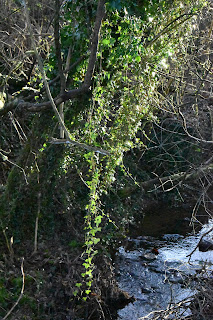I've been following the #GeorgetteHeyerReadalong of The Quiet Gentleman on twitter for the last few weeks. I'm late to this series of readalongs but it's proved to be the gift that keeps on giving, not least because this week it reminded me that there us a film version of 'The Reluctant Widow'. I managed to track it down on you tube where I found a version to watch with Greek subtitles, and possibly a few minutes missing.
It's a fairly terrible film which doesn't always make a lot of sense, and even if there are minutes missing and I could find a guaranteed complete version I doubt it would make much difference. Despite it's problems, which are mostly caused by messing with Heyer's plot, it was still an entertaining hour and a half, and a frustrating glimpse of how good Heyer based films could have been. Or possibly still could be.
I hadn't read 'The Reluctant Widow' for years so I picked it up and raced through it in an afternoon after watching the film. I don't know if this is anybody's favourite Heyer, but assuming that it's probably not makes it even more ideal for dramatisation, and I'd really love it if someone like Sarah Phelps stop bothering Agatha Christie and have some fun with a book like this.
If 'The Reluctant Widow' isn't a particular favourite, it's definitely one of her titles that has grown on me. I had thought it was a fairly late work (like Cousin Kate) but it's actually from 1946. Having checked the publication date it was also really clearly a second world war spy thriller in fancy dress. I may be inclined to read to much into Heyer, but for me the mark of her genius is how well bits of her books age; there are characters that make more sense to me now against our current, less binary, concepts of gender and sexuality, than they ever have before.
The book opens with Elinor Rochdale, on her way to taking up a position as a governess, mistakenly getting into the wrong carriage after being dropped off by the stage coach. We learn that Elinor's family lost their money in a cloud of scandal 6 years before and that she has preferred to be paid to be a drudge by others rather than do it for free for a less than generous extended family. We can also gather that it's been a fairly grim 6 years.
Elinor's options are fairly grim and by the time the misunderstandings are cleared up a proper crisis is brewing, so she agrees to a deathbed marriage (it makes sense in the book) somewhat against her better judgement. By dawn her husband is dead and she's left in possession of a dilapidated mansion and a whole new set of problems - including the architect of her currant situation, Lord Carlyon, who keeps promising everything will be fine, and who she really wants to believe.
The romance element isn't really important though - there's an attraction sketched in between Elinor and Carlyon partly based on mutual sympathy and understanding which is more or less incidental to the plot. It turns out that Carlyon's one time ward and cousin, Elinor's late husband, has been involved in spying for the French. A very important memorandum has gone missing, if it gets to the French it could spell disaster for Wellington's coming campaign. With the only man who knew where it was dead there's a race to find it.
Elinor finds a mysterious Frenchman in the house, Carlyon's youngest brother gets shot the next night by the same Frenchman having another go, and after various upsets Francis Cheviot turns up. He's a cousin of the late Eustace, might be read as a parody of effeminate campness and is easily the most intriguing character in the book.
A 1950's romantic film clearly couldn't make the most of him so turns him into a womanising fop, I prefer to read him as gay, but in any reading his effete manners are an affectation designed to disguise a very dangerous individual. Towards the end of the book he's described as "Villainous, perhaps, but not, I think, the villain of this plot." It's a nice distinction. Francis gets a lot of the best lines and all the moral complexity. He's a great character; a leader of fashion, the very man to advise on tricky matters of interior decoration, the owner of an exquisite sensibility, a cold blooded plotter, and murderer. He seems perfect for the SOE, the drawing room, and contemporary television. Heyer's more manly young men may scoff at him, but the supposed hero of the book recognises him for the force he is.
So there you go, yet again I've found a Heyer with much more going on under the surface than I at first imagined, and generally fizzing with humour, tension, and somewhat unexpected takes. This book is tremendous fun as a light hearted thriller, and even the terrible film is worth a watch.























